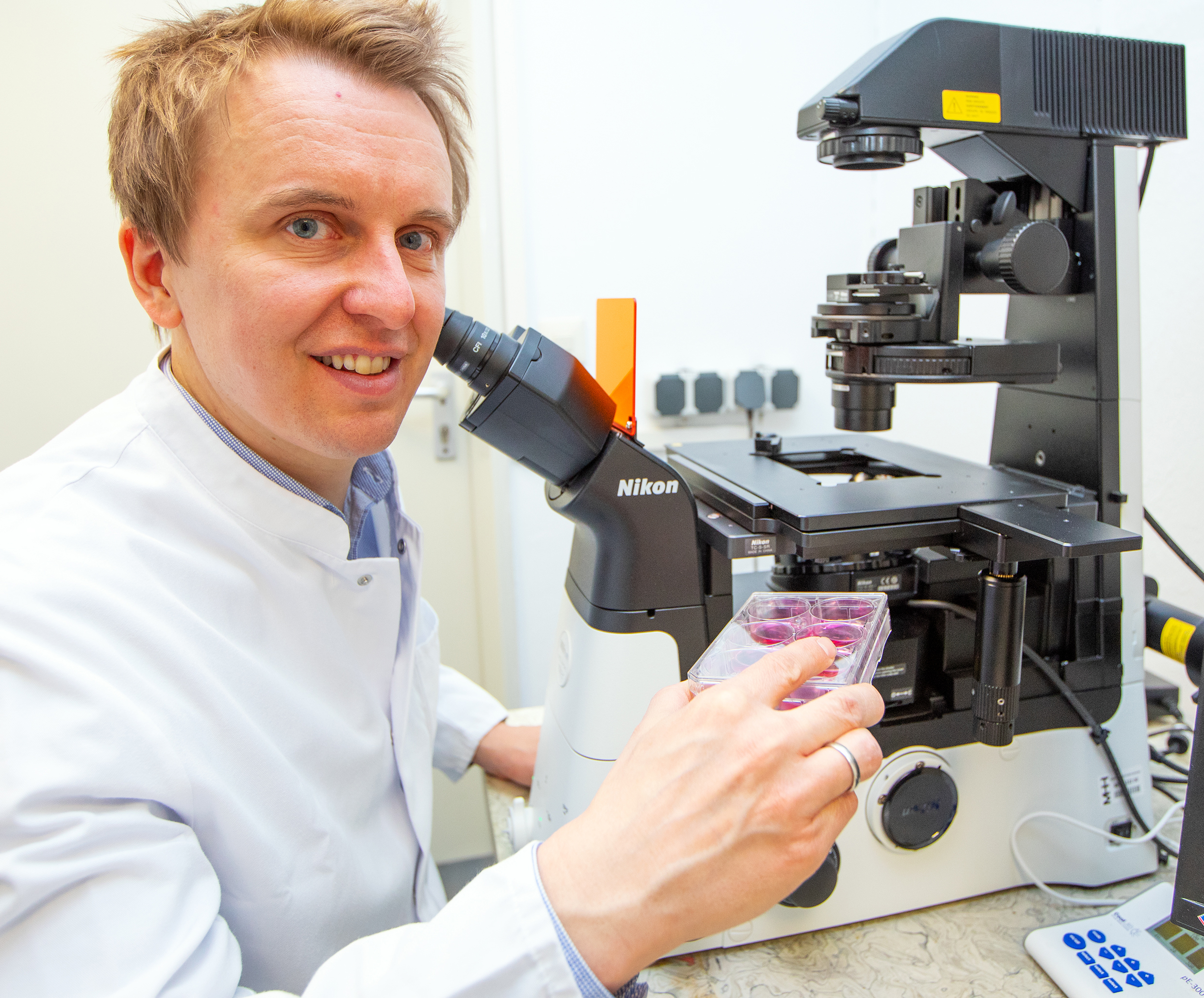MHH research team clarifies how liver inflammation and scarring of liver tissue are connected

Found out how liver inflammation and scarring processes are related to each other: Professor Dr. Ingmar Mederacke. Copyright: „Karin Kaiser / MHH“.
26.04.2022
At least five million people in Germany suffer from liver disease. Fibrosis, the pathological proliferation of connective tissue, plays an important role in many complications of chronic liver problems. Activated hepatic stellate cells (HSCs) are massively involved in this tissue remodelling. An international research team led by Professor Dr. Ingmar Mederacke, Managing Senior Physician at the Department of Gastroenterology, Hepatology and Endocrinology at the Hannover Medical School (MHH) has now found an approach to lower the activation of HSCs and reduce the associated development of liver fibrosis. The work has been published in the renowned journal Science Translational Medicine.
Hepatic stellate cells produce connective tissue
Liver fibrosis and the end-stage of liver fibrosis, cirrhosis, are a significant medical problem for which there are as yet no suitable drugs. The best-known causes include chronic alcohol consumption, infection with hepatitis viruses, but also medication or a fatty liver. The pathogenic stimuli damage the liver cells, the so-called hepatocytes. They die and thus trigger an inflammatory reaction. Until now, it was not known how this inflammatory process activates the hepatic stellate cells. The HSCs are located in the blood vessel walls in the immediate vicinity of the hepatocytes, where they mainly store vitamin A when at rest. However, when they are activated, they transform into myofibroblasts and produce abnormally large amounts of connective tissue. "We looked at which substances are released during cell death of hepatocytes and how exactly these molecules are related to fibrosis formation," says Professor Mederacke. The research team found out that certain stored, activated sugar molecules (UDP-glucose and UDP-galactose) are released during hepatocyte cell death. These can bind precisely to a protein called P2Y14 as so-called ligands. "We have found the P2Y14 receptor primarily in the liver stellate cells," explains the physician.
P2Y14 receptor as a link between cell death and fibrosis formation
In the mouse model, the research team examined the signalling pathway between P2Y14 ligands and receptor. An increased release of these activated sugar molecules led to the activation of stellate cells. Inactivation of the P2Y14 receptor, on the other hand, reduced fibrosis formation. "We were also able to detect the P2Y14 receptor in human hepatic stellate cells using special antibodies," says the hepatologist. The connection between cell death of the liver tissue and fibrosis formation has also been confirmed in studies of healthy and diseased human livers. The discovery could be an important step towards an anti-fibrotic therapy. The next step is to find an antagonist that can block the P2Y14 receptor and thus reduce the development of liver fibrosis.
SERVICE:
For further information, please contact Professor Dr. Ingmar Mederacke, mederacke.ingmar@mh-hannover.de, phone (0511) 532-6619
The original paper „The purinergic P2Y14 receptor links hepatocyte death to hepatic stellate cell activation and fibrogenesis in the liver” can be found here.